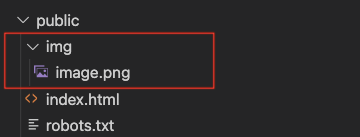
- #INSERTING A BACKGROUND IMAGE IN CSS LINK FROM FOLDER HOW TO#
- #INSERTING A BACKGROUND IMAGE IN CSS LINK FROM FOLDER FULL#

So if you have the image in a different location to the css file you could either try giving the absolute URL (pathway starting from the root folder) or give the relative file location path. The first value is for the width, the second for the height. Since you are providing a relative pathway to the image, the image location is looked for from the location in which you have the css file. length - As example: 100% auto or 400px auto.This is the complete list of background-size values: In this example, notice how the image covers the container. This is an automatic way to fill the complete container, no matter the image’s aspect ratio:
#INSERTING A BACKGROUND IMAGE IN CSS LINK FROM FOLDER HOW TO#
The text inside the body tag will overlay on the background image. How to set background image in CSS using jQuery - To set the background image using jQuery, use the jQuery css() method.ExampleUse the background-image propert. The property has been used for the content inside the body tag and therefore we will see the background image on the entire page. Include this syntax to make the background image go full. So, we have used the property background-image with the value as a URL of the website from where we want to import an image. In this example, notice how the image only covers the height, but not the width.
#INSERTING A BACKGROUND IMAGE IN CSS LINK FROM FOLDER FULL#
Include the syntax below to make the background image go full height: In this case, we are using an image with bigger height than width. Full height background, but no full width In tthis example, notice how the image only covers the width, but not the height.Įxample #2. relative or absolute filepath to rgb image file in jpg format. Include the syntax below to make the background image go full width: In this simple tutorial you will learn how to take the source link from an image tag (using a variable) and add it as a background image to any div with a cl. complete the html below to include a file path to an image called 'picture.jpg' located in the folder above the folder that the html is stored in. In this case, we are using an image which is higher than it is wide. Full width background, but no full height To define a specific size for the image, we’re missing the background-size property.

We use them here to showcase the different results we’ll display below. In the following example, as a background-size value, we use cover, which scales the background image as much as possible so that the background image entirely covers the area.

It's completely your preference, and you'll see it being done lots of different ways out in the wild of the web.Īlso, just as a side note, there's no need to try to memorize everything because that is virtually impossible. If you like being able to write all of the properties into one declaration, then use the 2nd method.

If you like seeing each property declared individually, use the 1st method. * First method */ background-image : url ( 'img/someimage.jpg' ) background-size : cover background-repeat : no-repeat /* OR Second method */ background : url ( 'img/someimage.jpg' ) cover no-repeat Įither one of those methods of CSS declarations is perfectly fine, and you should use what you feel comfortable with.


 0 kommentar(er)
0 kommentar(er)
